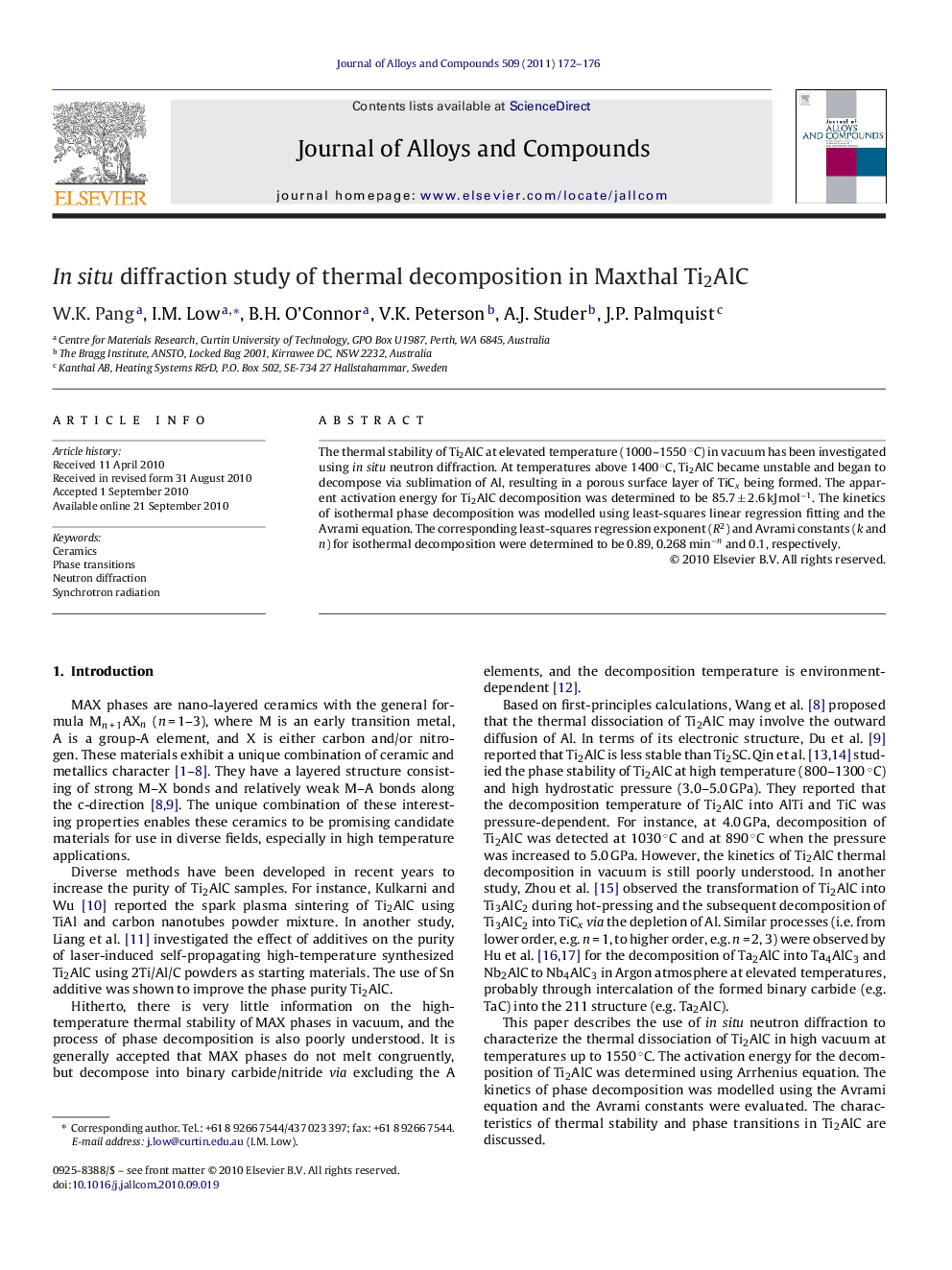| Article ID | Journal | Published Year | Pages | File Type |
|---|---|---|---|---|
| 1619025 | Journal of Alloys and Compounds | 2011 | 5 Pages |
The thermal stability of Ti2AlC at elevated temperature (1000–1550 °C) in vacuum has been investigated using in situ neutron diffraction. At temperatures above 1400 °C, Ti2AlC became unstable and began to decompose via sublimation of Al, resulting in a porous surface layer of TiCx being formed. The apparent activation energy for Ti2AlC decomposition was determined to be 85.7 ± 2.6 kJ mol−1. The kinetics of isothermal phase decomposition was modelled using least-squares linear regression fitting and the Avrami equation. The corresponding least-squares regression exponent (R2) and Avrami constants (k and n) for isothermal decomposition were determined to be 0.89, 0.268 min−n and 0.1, respectively.
Research highlights▶ The novelty of this work deals with the use of in situ diffraction to study the dynamics of phase decomposition in Ti2AlC at elevated temperature in real time. The apparent activation energy for Ti2AlC decomposition was determined to be 85.7 ± 2.6 kJ mol−1. The kinetics of isothermal phase decomposition was modelled and fitted using least-squares linear regression and the Avrami equation. The corresponding least-squares regression exponent (R2) and Avrami constants (k and n) of isothermal decomposition were determined to be 0.89, 0.268 min−n and 0.1, respectively.
